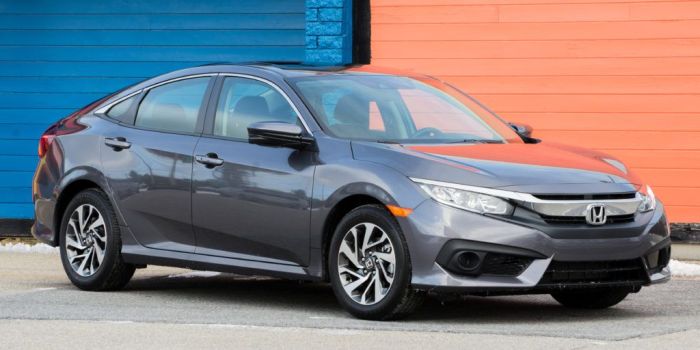Compact car engine specs hold the key to understanding the blend of efficiency and performance in today’s automotive landscape. These engines are designed not only to optimize fuel economy but also to deliver a satisfying driving experience, proving that size isn’t everything. By exploring their features, specifications, and the latest innovations, we can uncover how compact engines have become a staple in modern vehicles.
Do not overlook the opportunity to discover more about the subject of Engine displacement meaning.
From their lightweight construction that enhances maneuverability to the advanced technologies that boost power output while minimizing emissions, compact engines are engineered for the contemporary driver. As we delve into the specifics, we’ll highlight how these engines impact performance and fuel efficiency, making them a popular choice among car enthusiasts and everyday commuters alike.
You also can understand valuable knowledge by exploring Best sports cars 2024.
Overview of Compact Car Engines
Compact car engines are designed to offer a balance between performance and efficiency, making them a popular choice in the automotive market. These engines are typically smaller in size, allowing for lighter vehicles and improved fuel economy while still delivering sufficient power for everyday driving. The benefits of using compact engines in vehicles include lower emissions, enhanced fuel efficiency, and the ability to maintain an agile driving experience without sacrificing comfort.
Common types of compact engines found in the market include inline-4 engines, which are prevalent due to their compact design and reasonable power output, and turbocharged variants that provide an extra boost without significantly increasing engine size. For those seeking alternative fuel options, hybrid engines are gaining traction, offering a blend of traditional gasoline engines and electric power for improved efficiency.
Key Specifications of Compact Car Engines
The specifications of compact car engines are crucial in determining their performance and suitability for various driving scenarios. Standard specifications typically include displacement, horsepower, and torque, which directly influence how a vehicle accelerates and handles.
| Engine Type | Displacement (L) | Horsepower | Torque (lb-ft) |
|---|---|---|---|
| Inline-4 | 1.5 | 130 | 114 |
| Turbocharged Inline-4 | 1.5 | 180 | 177 |
| Hybrid | 1.8 | 121 | 105 |
The impact of engine specifications on vehicle performance is significant; higher horsepower and torque usually result in quicker acceleration and better hill-climbing capabilities, while larger displacement can enhance overall engine efficiency under various loads.
Fuel Efficiency and Emissions
Compact car engines play a vital role in improving fuel efficiency, which is increasingly important for both environmental and economic reasons. These engines are engineered to be more fuel-efficient than their larger counterparts, often resulting in lower overall fuel consumption.
Statistics show that many compact car models achieve impressive fuel economy ratings, often exceeding 30 miles per gallon (mpg) in combined city and highway driving. This translates to reduced emissions, making them a greener option for eco-conscious consumers.
| Model | Fuel Efficiency (mpg) | CO2 Emissions (g/km) |
|---|---|---|
| Honda Civic | 36 | 140 |
| Toyota Corolla | 33 | 135 |
| Ford Focus | 34 | 142 |
Turbocharged vs. Naturally Aspirated Engines
The performance characteristics of turbocharged and naturally aspirated compact engines vary considerably, impacting how a vehicle feels during acceleration. Turbocharged engines utilize forced induction to improve power output without increasing engine size, providing a significant advantage in performance.
Advantages of turbocharged engines include better fuel efficiency and higher power outputs compared to naturally aspirated engines, which rely solely on atmospheric pressure for air intake. However, naturally aspirated engines are often praised for their linear power delivery and simpler construction, leading to potentially lower maintenance costs.
Examples of compact car models that utilize these engine types include the Volkswagen Golf GTI, which features a turbocharged engine, and the Toyota Corolla, typically equipped with a naturally aspirated engine variant.
Engine Technology Innovations
The automotive industry is witnessing rapid advancements in engine technology, particularly within the compact car segment. Innovations such as direct fuel injection, variable valve timing, and lightweight materials are enhancing performance while reducing emissions.
Hybrid and electric technologies are increasingly being integrated into compact vehicles, offering drivers more choices than ever before. These technologies not only improve fuel economy but also contribute to a significant reduction in greenhouse gas emissions.
– Emerging trends in engine technology for compact cars include:
– Adoption of turbocharging for better power-to-weight ratios.
– Enhanced hybrid systems that maximize electric range.
– Use of advanced materials such as aluminum to reduce engine weight.
– Implementation of software algorithms for optimizing engine performance in real-time.
Maintenance and Durability of Compact Car Engines, Compact car engine specs

To ensure the longevity of compact car engines, proper maintenance practices are essential. Regular oil changes, timely replacement of filters, and periodic inspections can prevent many common issues.
Common issues faced by compact car engines include overheating, oil leaks, and timing belt failure. Early detection and prompt repairs can mitigate these problems, preserving engine health and performance.
– Best practices for maintaining compact car engines:
– Follow the manufacturer’s recommended service intervals.
– Monitor fluid levels and check for leaks regularly.
– Use high-quality fuel and oil products.
– Keep the engine clean to prevent buildup of debris.
Performance Upgrades for Compact Car Engines
Performance upgrades can significantly enhance the capabilities of compact car engines, improving both speed and handling. Upgrades such as cold air intakes, performance exhaust systems, and engine tuning can lead to noticeable improvements in power and responsiveness.
These upgrades not only enhance engine performance but can also affect vehicle handling, making it more agile and responsive during cornering and acceleration.
| Upgrade Type | Estimated Power Increase | Impact on Handling |
|---|---|---|
| Cold Air Intake | 5-15 HP | Improved throttle response |
| Performance Exhaust | 10-20 HP | Reduced back pressure |
| ECU Tune | 15-30 HP | Enhanced overall performance |
Popular Compact Car Models and Their Engine Specs

Numerous compact car models have gained popularity due to their performance and efficiency. Below is a list of some well-known models along with their detailed engine specifications.
– Popular compact car models include:
– Honda Civic: 2.0L Inline-4, 158 HP, 138 lb-ft torque.
– Toyota Corolla: 1.8L Inline-4, 139 HP, 126 lb-ft torque.
– Hyundai Elantra: 2.0L Inline-4, 147 HP, 132 lb-ft torque.
Each model carries a reputation for reliability and performance, making them favored choices for consumers looking for compact cars with robust engine specs.
| Model | Engine Type | Horsepower | Torque (lb-ft) |
|---|---|---|---|
| Honda Civic | Inline-4 | 158 | 138 |
| Toyota Corolla | Inline-4 | 139 | 126 |
| Hyundai Elantra | Inline-4 | 147 | 132 |
Final Wrap-Up: Compact Car Engine Specs

In conclusion, the world of compact car engine specs is as diverse as it is essential for understanding the future of driving. With advancements in technology, a commitment to fuel efficiency, and a range of performance options, these engines not only meet but often exceed expectations. As the automotive industry continues to evolve, compact engines will remain at the forefront, proving their worth in both performance and sustainability.